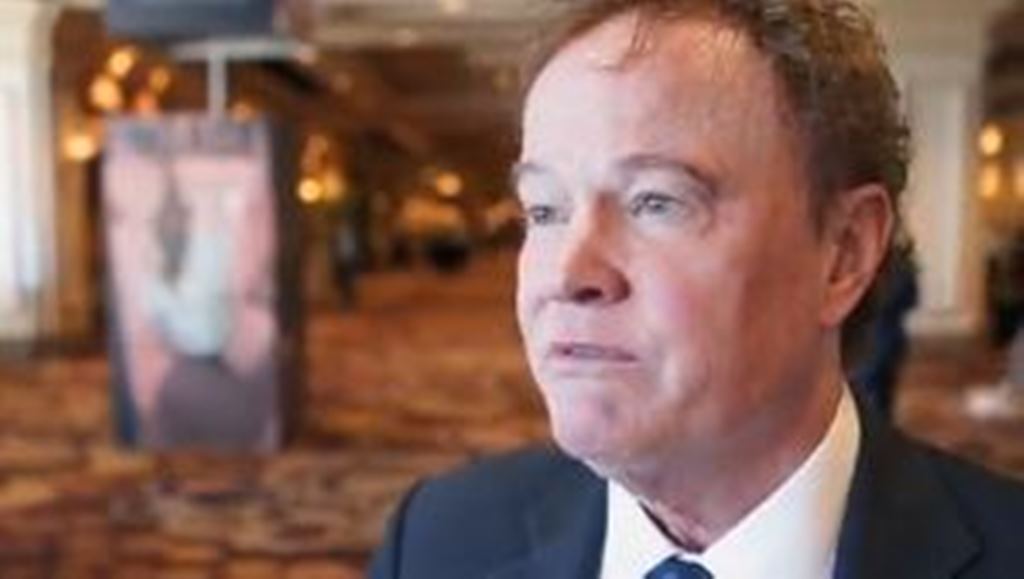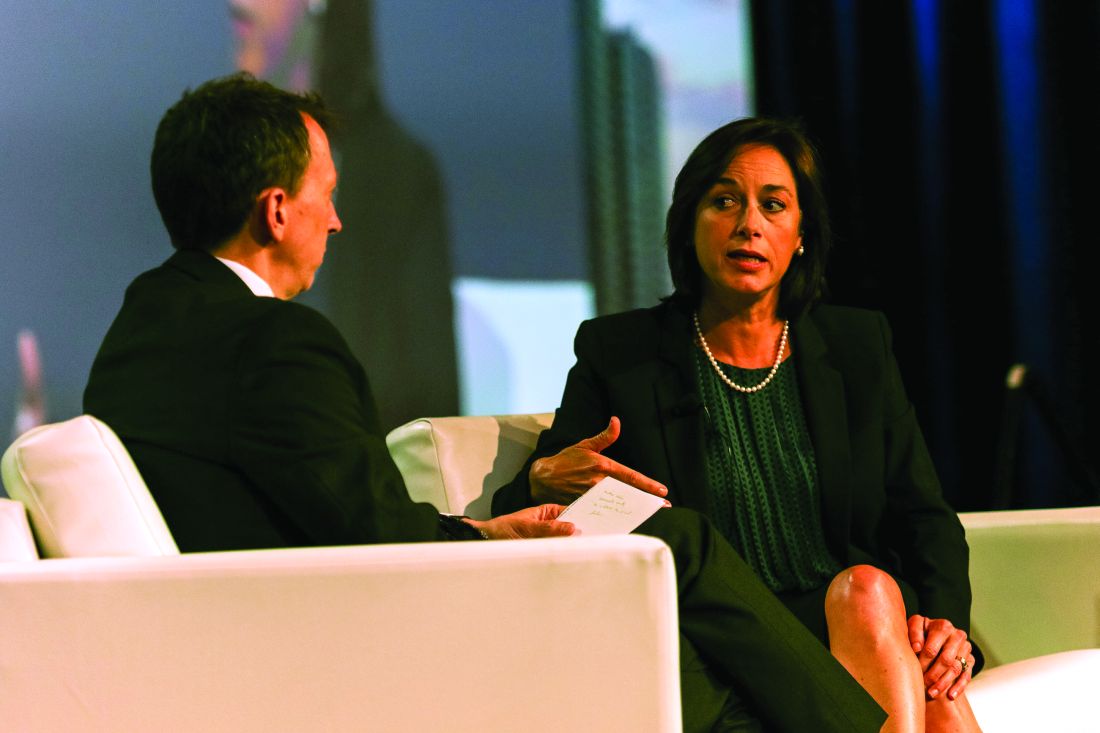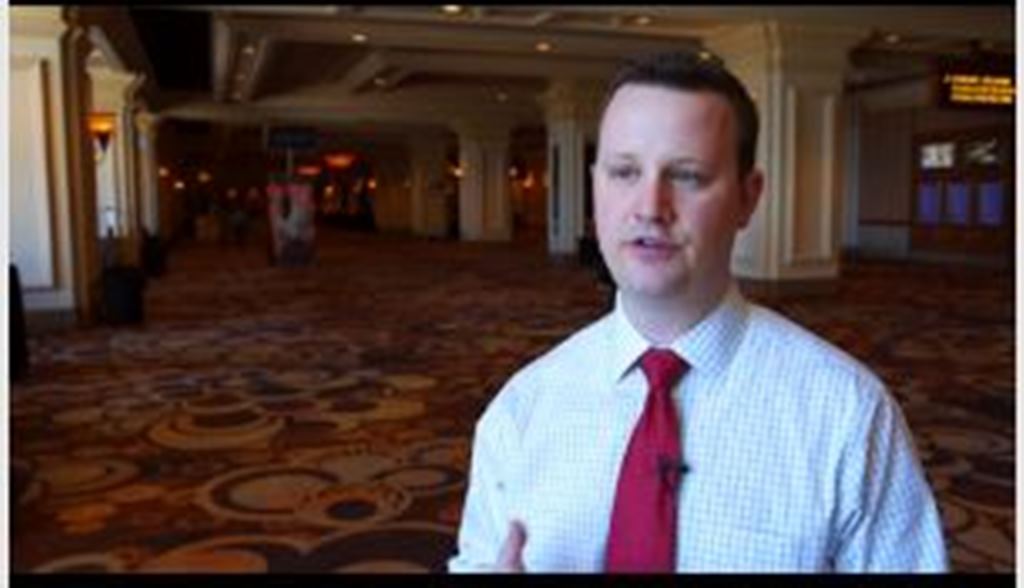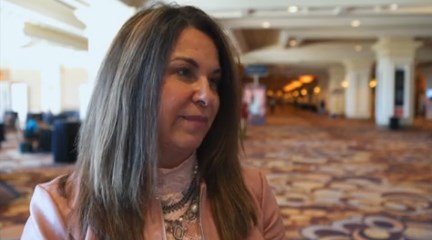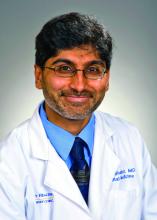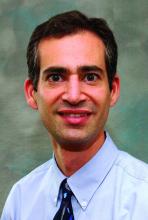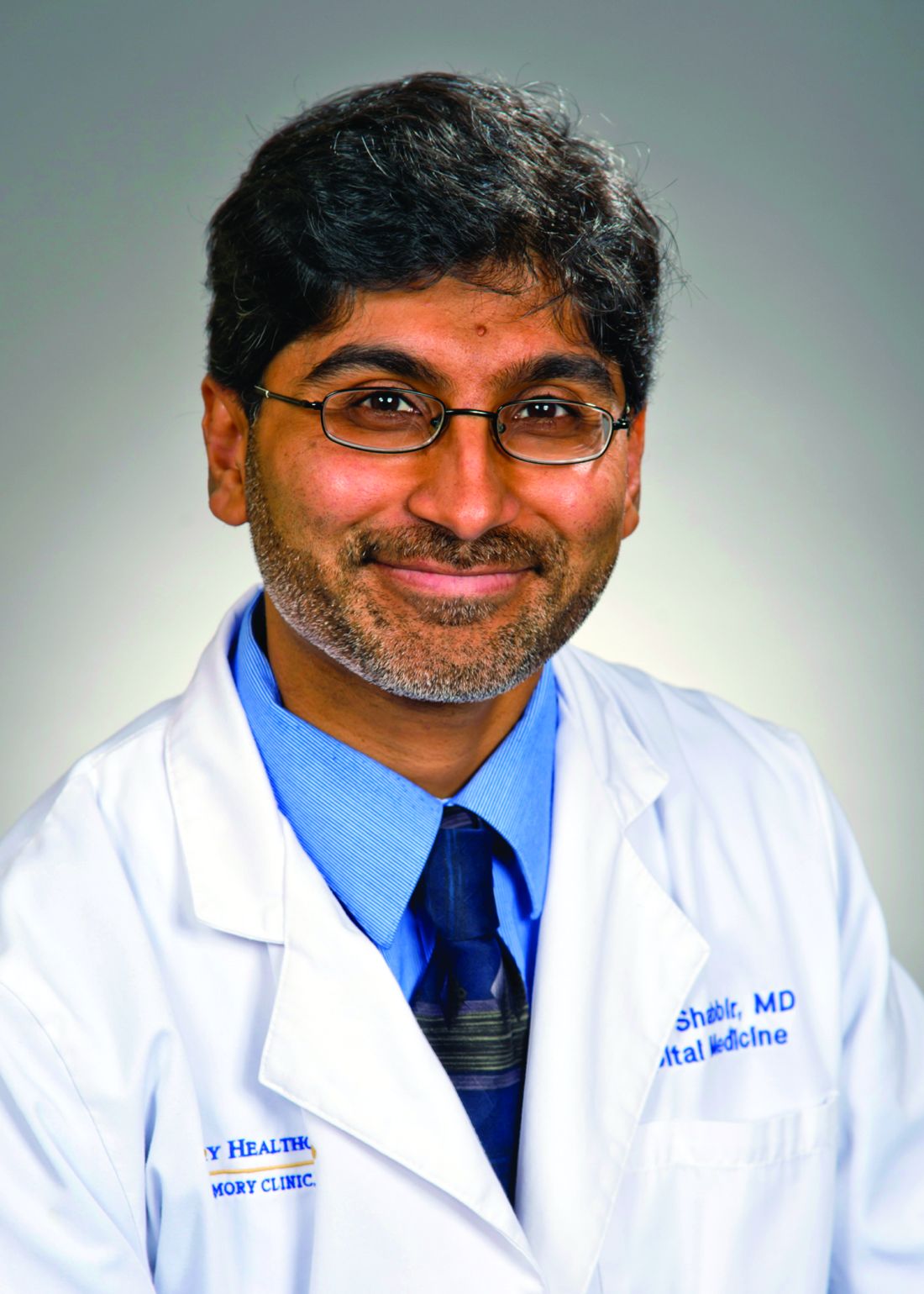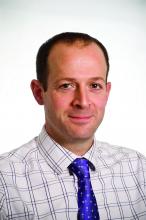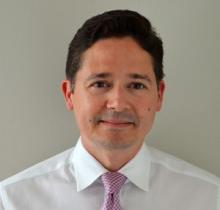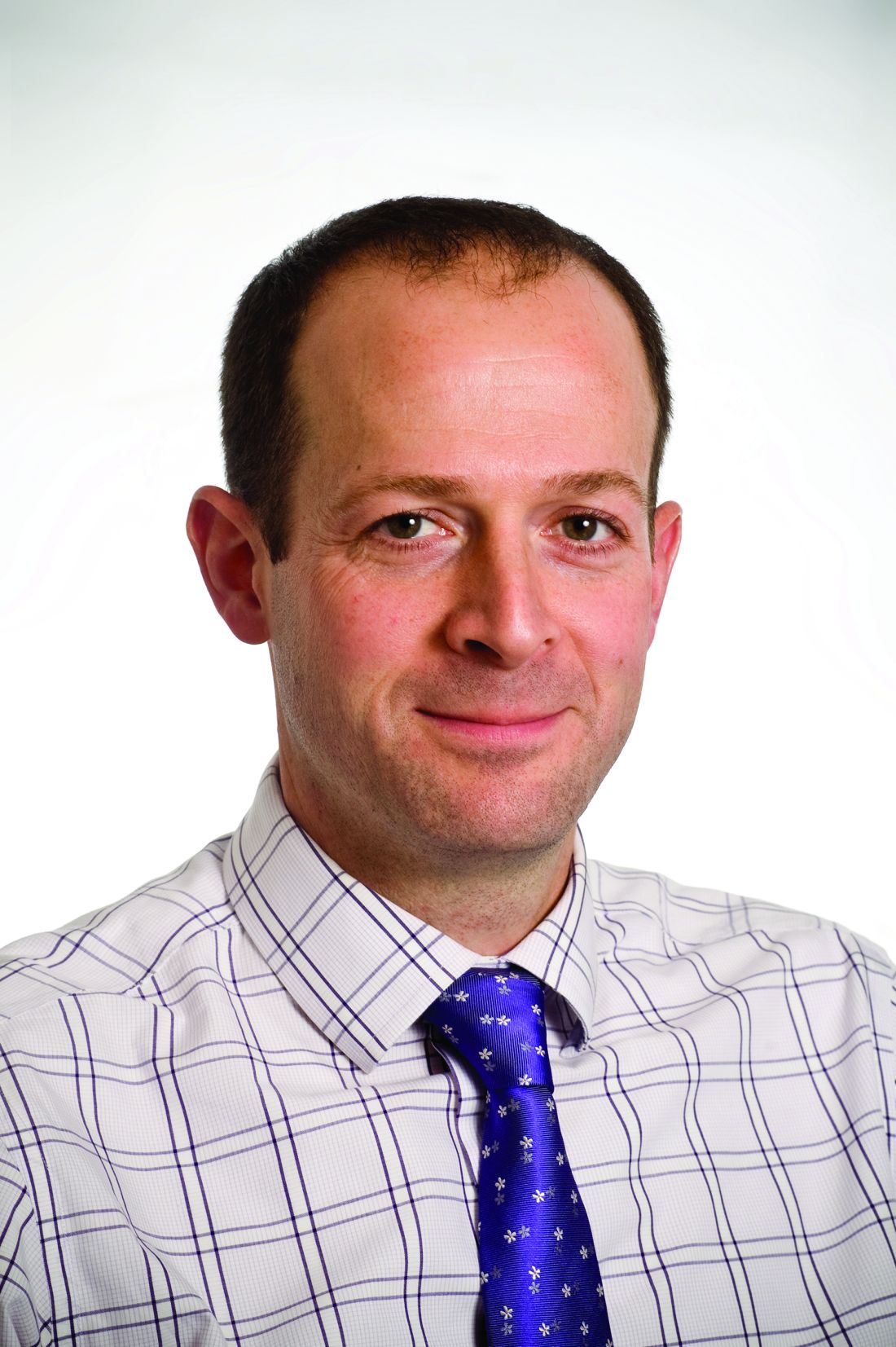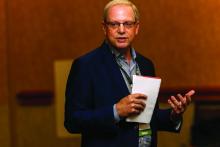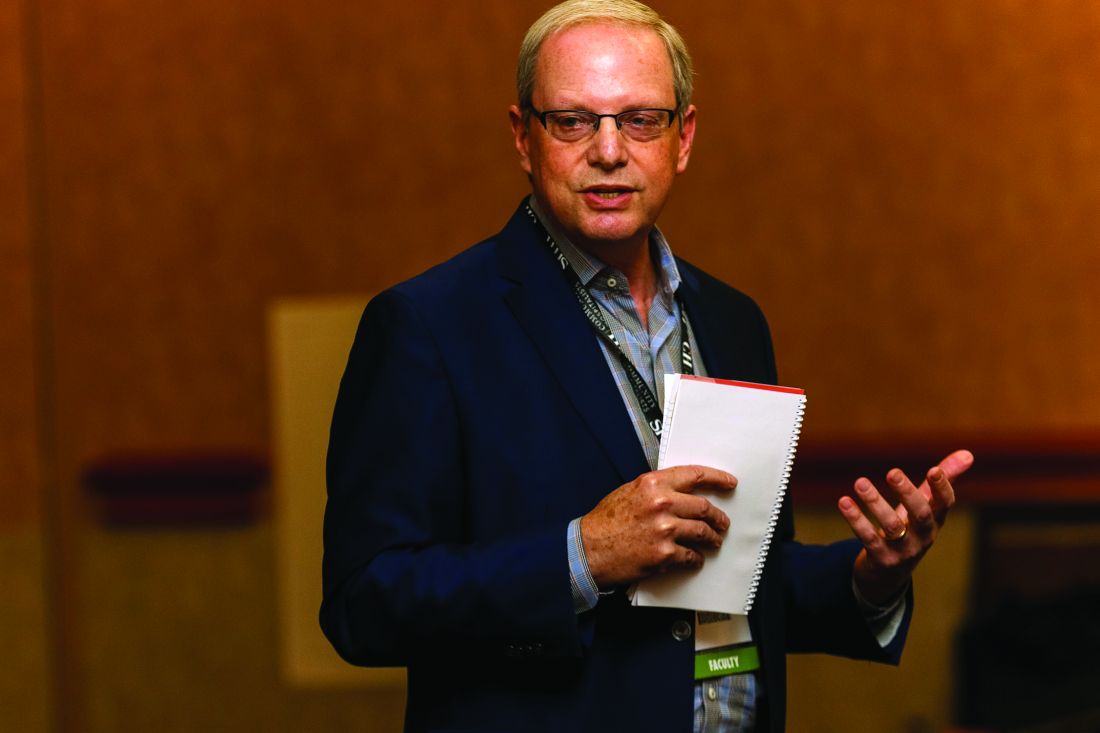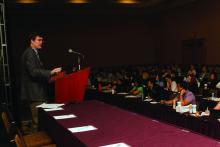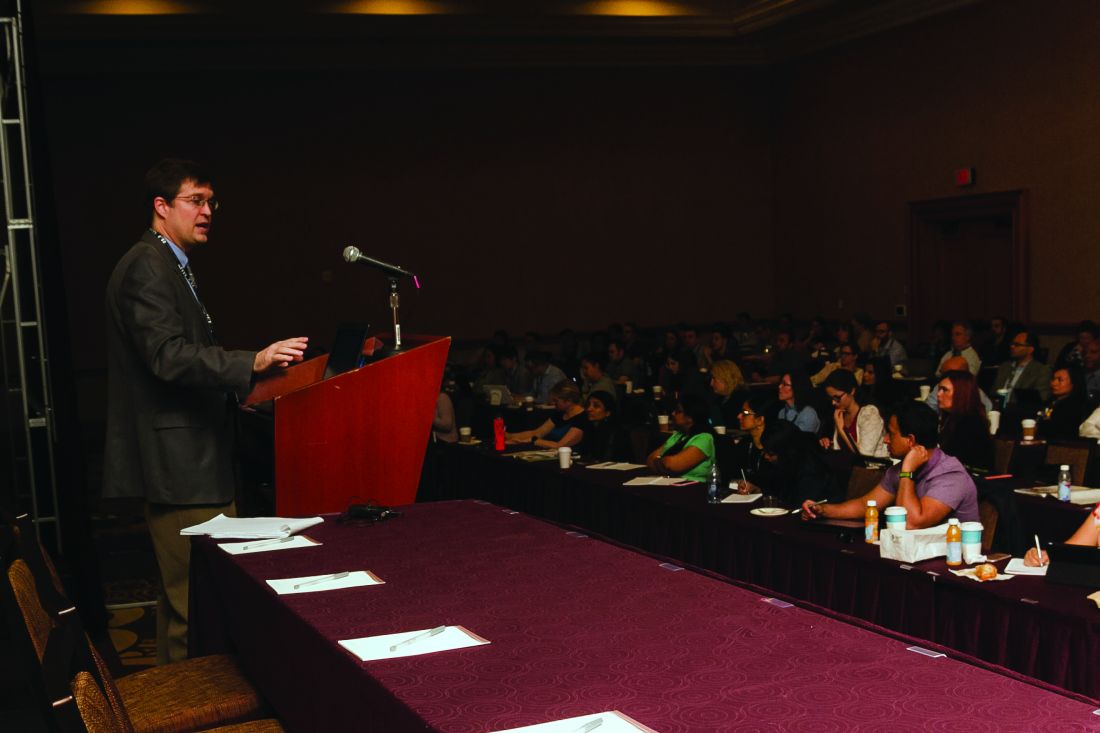User login
Official news magazine of the Society of Hospital Medicine
Copyright by Society of Hospital Medicine or related companies. All rights reserved. ISSN 1553-085X
nav[contains(@class, 'nav-ce-stack nav-ce-stack__large-screen')]
header[@id='header']
div[contains(@class, 'header__large-screen')]
div[contains(@class, 'read-next-article')]
div[contains(@class, 'main-prefix')]
div[contains(@class, 'nav-primary')]
nav[contains(@class, 'nav-primary')]
section[contains(@class, 'footer-nav-section-wrapper')]
footer[@id='footer']
section[contains(@class, 'nav-hidden')]
div[contains(@class, 'ce-card-content')]
nav[contains(@class, 'nav-ce-stack')]
div[contains(@class, 'view-medstat-quiz-listing-panes')]
div[contains(@class, 'pane-article-sidebar-latest-news')]
div[contains(@class, 'pane-pub-article-hospitalist')]


VIDEO: Policy-focused SHM president thinks hospitalists can impact global, systems change
An original member of the Society of Hospital Medicine, new SHM Board President Ron Greeno, MD, MHM, is excited about helping to guide hospitalists into a new era of health system transformation.
The former chair of SHM’s Public Policy Committee, Dr. Greeno believes payment reforms like MACRA will have a “huge impact” on both hospitalists and the hospitals/health systems they work in. He expects hospital medicine, as a field, is well positioned for such changes and can play a vital role in systems change at the global level.
“In order to impact those things, hospitalists have to be ready to help change systems,” he said after his plenary address Tuesday at HM17.
The video associated with this article is no longer available on this site. Please view all of our videos on the MDedge YouTube channel
An original member of the Society of Hospital Medicine, new SHM Board President Ron Greeno, MD, MHM, is excited about helping to guide hospitalists into a new era of health system transformation.
The former chair of SHM’s Public Policy Committee, Dr. Greeno believes payment reforms like MACRA will have a “huge impact” on both hospitalists and the hospitals/health systems they work in. He expects hospital medicine, as a field, is well positioned for such changes and can play a vital role in systems change at the global level.
“In order to impact those things, hospitalists have to be ready to help change systems,” he said after his plenary address Tuesday at HM17.
The video associated with this article is no longer available on this site. Please view all of our videos on the MDedge YouTube channel
An original member of the Society of Hospital Medicine, new SHM Board President Ron Greeno, MD, MHM, is excited about helping to guide hospitalists into a new era of health system transformation.
The former chair of SHM’s Public Policy Committee, Dr. Greeno believes payment reforms like MACRA will have a “huge impact” on both hospitalists and the hospitals/health systems they work in. He expects hospital medicine, as a field, is well positioned for such changes and can play a vital role in systems change at the global level.
“In order to impact those things, hospitalists have to be ready to help change systems,” he said after his plenary address Tuesday at HM17.
The video associated with this article is no longer available on this site. Please view all of our videos on the MDedge YouTube channel
DeSalvo: HM needs holistic approach to health care
LAS VEGAS – To deliver her message of inclusion Tuesday morning, former acting assistant secretary for health in the U.S. Department of Health and Human Services (HHS) Karen DeSalvo, MD, MPH, MSc, could think of “no finer group” than those assembled before her at HM17.
The thousands of hospitalists gathered to hear her keynote address, “Rethinking Health: The Vital Role of Hospitals and the Hospitalist,” listened as she talked about including more than just the best medical care in HM’s scope of practice. The job must evolve to include a focus on such social issues as economic stability, neighborhood and physical environment, education, and access to healthy options for food.
In other words, Dr. DeSalvo wondered aloud, what good is treating a grandmother’s heart failure over and over if she’s always going to return to the hospital because her home, her neighborhood, or her finances mean she is unable to prevent recurring health issues? [[{"fid":"195561","view_mode":"medstat_image_flush_left","attributes":{"alt":"Dr. Brian Harte conducts an interveiw with Dr. Karen DeSalvo duing the opening plenary Tuesday at HM17.","height":"147","width":"220","class":"media-element file-medstat-image-flush-left","data-delta":"1"},"fields":{"format":"medstat_image_flush_left","field_file_image_caption[und][0][value]":"Dr. Brian Harte conducts an interview with Dr. Karen DeSalvo during the opening plenary Tuesday at HM17.","field_file_image_credit[und][0][value]":"Darnell Scott","field_file_image_caption[und][0][format]":"plain_text","field_file_image_credit[und][0][format]":"plain_text"},"type":"media","field_deltas":{"1":{"format":"medstat_image_flush_left","field_file_image_caption[und][0][value]":"Dr. Brian Harte conducts an interview with Dr. Karen DeSalvo during the opening plenary Tuesday at HM17.","field_file_image_credit[und][0][value]":"Darnell Scott"}}}]]
Hospitalists “have been at the center of change, not only in building a new field and showing us that medicine doesn’t have to always be the way it always was,” she said. “You have been at the forefront of seeing that we’re getting better value out of our health care system and, though that work must continue, you must also begin to broaden our thinking and understand that the drivers of health are much more than [just] health care. There are social determinants, social factors.”
Dr. DeSalvo, an internist by training, understands that dealing with social issues may seem like a role for others, but she said that the implications of those factors directly impact hospitalists and their institutions via issues such as readmissions.
“These things … don’t just matter conceptually,” she said. “They [have] direct relationships with mortality and morbidity and cost. They are literally affecting people’s lives in this country every day. When we begin to adjust them, to impact them, you can see that it also affects the health care system.”
On the front lines, Dr. DeSalvo said that hospitalists and others can work to take advantage of their hospital’s existing tools to link their patients to available resources, partner with local public health offices, and push to make their hospitals “anchor institutions to build community capacity to address these social determinants.”
Dr. DeSalvo also praised HM as a field that has already embraced value-based payment (VBP) models. She said that ability to anticipate and adapt to health care’s changing needs positions the field well as the Medicare Access and CHIP Reauthorization Act (MACRA) moves health care from fee-for-service to payment models that seek to manage risk and penalize mistakes.
LAS VEGAS – To deliver her message of inclusion Tuesday morning, former acting assistant secretary for health in the U.S. Department of Health and Human Services (HHS) Karen DeSalvo, MD, MPH, MSc, could think of “no finer group” than those assembled before her at HM17.
The thousands of hospitalists gathered to hear her keynote address, “Rethinking Health: The Vital Role of Hospitals and the Hospitalist,” listened as she talked about including more than just the best medical care in HM’s scope of practice. The job must evolve to include a focus on such social issues as economic stability, neighborhood and physical environment, education, and access to healthy options for food.
In other words, Dr. DeSalvo wondered aloud, what good is treating a grandmother’s heart failure over and over if she’s always going to return to the hospital because her home, her neighborhood, or her finances mean she is unable to prevent recurring health issues? [[{"fid":"195561","view_mode":"medstat_image_flush_left","attributes":{"alt":"Dr. Brian Harte conducts an interveiw with Dr. Karen DeSalvo duing the opening plenary Tuesday at HM17.","height":"147","width":"220","class":"media-element file-medstat-image-flush-left","data-delta":"1"},"fields":{"format":"medstat_image_flush_left","field_file_image_caption[und][0][value]":"Dr. Brian Harte conducts an interview with Dr. Karen DeSalvo during the opening plenary Tuesday at HM17.","field_file_image_credit[und][0][value]":"Darnell Scott","field_file_image_caption[und][0][format]":"plain_text","field_file_image_credit[und][0][format]":"plain_text"},"type":"media","field_deltas":{"1":{"format":"medstat_image_flush_left","field_file_image_caption[und][0][value]":"Dr. Brian Harte conducts an interview with Dr. Karen DeSalvo during the opening plenary Tuesday at HM17.","field_file_image_credit[und][0][value]":"Darnell Scott"}}}]]
Hospitalists “have been at the center of change, not only in building a new field and showing us that medicine doesn’t have to always be the way it always was,” she said. “You have been at the forefront of seeing that we’re getting better value out of our health care system and, though that work must continue, you must also begin to broaden our thinking and understand that the drivers of health are much more than [just] health care. There are social determinants, social factors.”
Dr. DeSalvo, an internist by training, understands that dealing with social issues may seem like a role for others, but she said that the implications of those factors directly impact hospitalists and their institutions via issues such as readmissions.
“These things … don’t just matter conceptually,” she said. “They [have] direct relationships with mortality and morbidity and cost. They are literally affecting people’s lives in this country every day. When we begin to adjust them, to impact them, you can see that it also affects the health care system.”
On the front lines, Dr. DeSalvo said that hospitalists and others can work to take advantage of their hospital’s existing tools to link their patients to available resources, partner with local public health offices, and push to make their hospitals “anchor institutions to build community capacity to address these social determinants.”
Dr. DeSalvo also praised HM as a field that has already embraced value-based payment (VBP) models. She said that ability to anticipate and adapt to health care’s changing needs positions the field well as the Medicare Access and CHIP Reauthorization Act (MACRA) moves health care from fee-for-service to payment models that seek to manage risk and penalize mistakes.
LAS VEGAS – To deliver her message of inclusion Tuesday morning, former acting assistant secretary for health in the U.S. Department of Health and Human Services (HHS) Karen DeSalvo, MD, MPH, MSc, could think of “no finer group” than those assembled before her at HM17.
The thousands of hospitalists gathered to hear her keynote address, “Rethinking Health: The Vital Role of Hospitals and the Hospitalist,” listened as she talked about including more than just the best medical care in HM’s scope of practice. The job must evolve to include a focus on such social issues as economic stability, neighborhood and physical environment, education, and access to healthy options for food.
In other words, Dr. DeSalvo wondered aloud, what good is treating a grandmother’s heart failure over and over if she’s always going to return to the hospital because her home, her neighborhood, or her finances mean she is unable to prevent recurring health issues? [[{"fid":"195561","view_mode":"medstat_image_flush_left","attributes":{"alt":"Dr. Brian Harte conducts an interveiw with Dr. Karen DeSalvo duing the opening plenary Tuesday at HM17.","height":"147","width":"220","class":"media-element file-medstat-image-flush-left","data-delta":"1"},"fields":{"format":"medstat_image_flush_left","field_file_image_caption[und][0][value]":"Dr. Brian Harte conducts an interview with Dr. Karen DeSalvo during the opening plenary Tuesday at HM17.","field_file_image_credit[und][0][value]":"Darnell Scott","field_file_image_caption[und][0][format]":"plain_text","field_file_image_credit[und][0][format]":"plain_text"},"type":"media","field_deltas":{"1":{"format":"medstat_image_flush_left","field_file_image_caption[und][0][value]":"Dr. Brian Harte conducts an interview with Dr. Karen DeSalvo during the opening plenary Tuesday at HM17.","field_file_image_credit[und][0][value]":"Darnell Scott"}}}]]
Hospitalists “have been at the center of change, not only in building a new field and showing us that medicine doesn’t have to always be the way it always was,” she said. “You have been at the forefront of seeing that we’re getting better value out of our health care system and, though that work must continue, you must also begin to broaden our thinking and understand that the drivers of health are much more than [just] health care. There are social determinants, social factors.”
Dr. DeSalvo, an internist by training, understands that dealing with social issues may seem like a role for others, but she said that the implications of those factors directly impact hospitalists and their institutions via issues such as readmissions.
“These things … don’t just matter conceptually,” she said. “They [have] direct relationships with mortality and morbidity and cost. They are literally affecting people’s lives in this country every day. When we begin to adjust them, to impact them, you can see that it also affects the health care system.”
On the front lines, Dr. DeSalvo said that hospitalists and others can work to take advantage of their hospital’s existing tools to link their patients to available resources, partner with local public health offices, and push to make their hospitals “anchor institutions to build community capacity to address these social determinants.”
Dr. DeSalvo also praised HM as a field that has already embraced value-based payment (VBP) models. She said that ability to anticipate and adapt to health care’s changing needs positions the field well as the Medicare Access and CHIP Reauthorization Act (MACRA) moves health care from fee-for-service to payment models that seek to manage risk and penalize mistakes.
Rapid-fire session troubleshoots mechanical ventilation
Troubleshooting problems with mechanical ventilation starts with assessing how much control one has over specific variables, according to an expert at HM17.
“You want to be in charge of everything when you’re dealing with a ventilator, but you have to acknowledge that you only get to be in charge of some stuff,” said Peter Clardy, MD, an assistant professor of medicine at Harvard University in Cambridge, Mass., and its affiliate, Mount Auburn Hospital. He made his remarks during a rapid-fire science session at HM17.
Since successful algorithms for acute mechanical ventilation require control over many independent variables, knowing what is most stable and going from there can allow the physician to develop a workable plan of action, according to Dr. Clardy.
“It’s really good to be explicit about what is dependent and what is independent,” he said. Independent variables might be those specific to the ventilator, but will always include the positive end-expiratory pressure and the fraction of inspired oxygen. Other independent variables will depend on the mode of ventilation – either fully assisted, partially assisted, or noninvasive.
“If you’re in charge of volume, you have to worry about pressure,” he noted. “If you’re in charge of pressure you have to worry about volume.”
Dependent variables also can vary by mode of ventilation. Once the independent and dependent variables are mapped, it is easier to glean more information about the respiratory mechanics of the situation and the physiologic processes, such as the metabolic cost of breathing and whether it can be reduced, what can be done to prevent ventilator-induced lung injury, and how gas exchange can be supported.
Understanding the independent/dependent variable ratio can also help provide valuable clinical information, such as whether reversing hypoxemia and/or hypercarbia is necessary, or if there are signs of respiratory distress or dyspnea. Other clinical indications might include whether there is a need to prevent or reverse atelectasis, or reduce ventilatory muscle fatigue. Additionally, it will be easier to know whether sedation is possible, or if a neuromuscular blockade should be used. Such information can help determine whether to protect the airway.
“Respiratory distress in a patient who is already ventilated is quite common, so having a routinized way to assess these patients and their stability can help you think about what your moves are right there while you’re in the room,” Dr. Clardy explained. “All of that can be incredibly helpful.”
Dr. Clardy had no relevant financial disclosures.
Troubleshooting problems with mechanical ventilation starts with assessing how much control one has over specific variables, according to an expert at HM17.
“You want to be in charge of everything when you’re dealing with a ventilator, but you have to acknowledge that you only get to be in charge of some stuff,” said Peter Clardy, MD, an assistant professor of medicine at Harvard University in Cambridge, Mass., and its affiliate, Mount Auburn Hospital. He made his remarks during a rapid-fire science session at HM17.
Since successful algorithms for acute mechanical ventilation require control over many independent variables, knowing what is most stable and going from there can allow the physician to develop a workable plan of action, according to Dr. Clardy.
“It’s really good to be explicit about what is dependent and what is independent,” he said. Independent variables might be those specific to the ventilator, but will always include the positive end-expiratory pressure and the fraction of inspired oxygen. Other independent variables will depend on the mode of ventilation – either fully assisted, partially assisted, or noninvasive.
“If you’re in charge of volume, you have to worry about pressure,” he noted. “If you’re in charge of pressure you have to worry about volume.”
Dependent variables also can vary by mode of ventilation. Once the independent and dependent variables are mapped, it is easier to glean more information about the respiratory mechanics of the situation and the physiologic processes, such as the metabolic cost of breathing and whether it can be reduced, what can be done to prevent ventilator-induced lung injury, and how gas exchange can be supported.
Understanding the independent/dependent variable ratio can also help provide valuable clinical information, such as whether reversing hypoxemia and/or hypercarbia is necessary, or if there are signs of respiratory distress or dyspnea. Other clinical indications might include whether there is a need to prevent or reverse atelectasis, or reduce ventilatory muscle fatigue. Additionally, it will be easier to know whether sedation is possible, or if a neuromuscular blockade should be used. Such information can help determine whether to protect the airway.
“Respiratory distress in a patient who is already ventilated is quite common, so having a routinized way to assess these patients and their stability can help you think about what your moves are right there while you’re in the room,” Dr. Clardy explained. “All of that can be incredibly helpful.”
Dr. Clardy had no relevant financial disclosures.
Troubleshooting problems with mechanical ventilation starts with assessing how much control one has over specific variables, according to an expert at HM17.
“You want to be in charge of everything when you’re dealing with a ventilator, but you have to acknowledge that you only get to be in charge of some stuff,” said Peter Clardy, MD, an assistant professor of medicine at Harvard University in Cambridge, Mass., and its affiliate, Mount Auburn Hospital. He made his remarks during a rapid-fire science session at HM17.
Since successful algorithms for acute mechanical ventilation require control over many independent variables, knowing what is most stable and going from there can allow the physician to develop a workable plan of action, according to Dr. Clardy.
“It’s really good to be explicit about what is dependent and what is independent,” he said. Independent variables might be those specific to the ventilator, but will always include the positive end-expiratory pressure and the fraction of inspired oxygen. Other independent variables will depend on the mode of ventilation – either fully assisted, partially assisted, or noninvasive.
“If you’re in charge of volume, you have to worry about pressure,” he noted. “If you’re in charge of pressure you have to worry about volume.”
Dependent variables also can vary by mode of ventilation. Once the independent and dependent variables are mapped, it is easier to glean more information about the respiratory mechanics of the situation and the physiologic processes, such as the metabolic cost of breathing and whether it can be reduced, what can be done to prevent ventilator-induced lung injury, and how gas exchange can be supported.
Understanding the independent/dependent variable ratio can also help provide valuable clinical information, such as whether reversing hypoxemia and/or hypercarbia is necessary, or if there are signs of respiratory distress or dyspnea. Other clinical indications might include whether there is a need to prevent or reverse atelectasis, or reduce ventilatory muscle fatigue. Additionally, it will be easier to know whether sedation is possible, or if a neuromuscular blockade should be used. Such information can help determine whether to protect the airway.
“Respiratory distress in a patient who is already ventilated is quite common, so having a routinized way to assess these patients and their stability can help you think about what your moves are right there while you’re in the room,” Dr. Clardy explained. “All of that can be incredibly helpful.”
Dr. Clardy had no relevant financial disclosures.
VIDEO: Advocacy efforts spur CMS to drop HCAHPS pain domain assessment
How pain management is evaluated in the Hospital Consumer Assessment of Healthcare Providers and Systems (HCAHPS) survey is changing, thanks in part to the advocacy efforts of the Society of Hospital Medicine’s public policy committee.
Based on input from SHM and other organizations, the Centers for Medicare & Medicaid Services decided that the way the survey was worded concerning pain management could be leading to unintended consequences, particularly in light of the opioid epidemic.
In a video interview recorded during HM17, John Biebelhausen, MD, MBA, discussed how SHM worked with the CMS to help “improve the HCAHPS survey to make a better patient satisfaction tool for our assessments and also eliminate some of the competing pressures the physician might face.”
Dr. Biebelhausen is a hospitalist and physician lead for quality reporting at Virginia Mason Hospital in Seattle. He had no relevant disclosures.hospitalist and Physician Lead for Quality Reporting.
The video associated with this article is no longer available on this site. Please view all of our videos on the MDedge YouTube channel
How pain management is evaluated in the Hospital Consumer Assessment of Healthcare Providers and Systems (HCAHPS) survey is changing, thanks in part to the advocacy efforts of the Society of Hospital Medicine’s public policy committee.
Based on input from SHM and other organizations, the Centers for Medicare & Medicaid Services decided that the way the survey was worded concerning pain management could be leading to unintended consequences, particularly in light of the opioid epidemic.
In a video interview recorded during HM17, John Biebelhausen, MD, MBA, discussed how SHM worked with the CMS to help “improve the HCAHPS survey to make a better patient satisfaction tool for our assessments and also eliminate some of the competing pressures the physician might face.”
Dr. Biebelhausen is a hospitalist and physician lead for quality reporting at Virginia Mason Hospital in Seattle. He had no relevant disclosures.hospitalist and Physician Lead for Quality Reporting.
The video associated with this article is no longer available on this site. Please view all of our videos on the MDedge YouTube channel
How pain management is evaluated in the Hospital Consumer Assessment of Healthcare Providers and Systems (HCAHPS) survey is changing, thanks in part to the advocacy efforts of the Society of Hospital Medicine’s public policy committee.
Based on input from SHM and other organizations, the Centers for Medicare & Medicaid Services decided that the way the survey was worded concerning pain management could be leading to unintended consequences, particularly in light of the opioid epidemic.
In a video interview recorded during HM17, John Biebelhausen, MD, MBA, discussed how SHM worked with the CMS to help “improve the HCAHPS survey to make a better patient satisfaction tool for our assessments and also eliminate some of the competing pressures the physician might face.”
Dr. Biebelhausen is a hospitalist and physician lead for quality reporting at Virginia Mason Hospital in Seattle. He had no relevant disclosures.hospitalist and Physician Lead for Quality Reporting.
The video associated with this article is no longer available on this site. Please view all of our videos on the MDedge YouTube channel
On the big stage, SHM leaders discuss pressing issues
When Society of Hospital Medicine president Brian Harte, MD, SFHM, made remarks last year as president-elect, he outlined four areas that call for attention and action.
On Tuesday, as the outgoing president making remarks at the opening plenary session, he traced the progress in those areas, while also airing some concerns as the society moves forward.
On the “absolute necessity” for SHM to reach out and connect with all practicing hospitalists, he reported that the society continued to expand its footprint, making contact with 50,000 hospitalists.
“SHM continues to be a strong professional organization,” Dr. Harte said, noting how the society cleared the 15,000 mark in membership last year. He also emphasized the “big tent” concept – making SHM the home for practitioners in many disciplines – and the importance of leadership.
“Sometimes it feels like everyone thinks of themselves as someone that we have to report to and therefore leadership development continues to be an important driver for our activities,” said Dr. Harte, president of Cleveland Clinic’s Akron General Hospital.
On the need to continue to focus on patient and family-centered care, he said, the curriculum at this meeting and past meetings shows a recognition of how important communication and empathy are.
“By doing so, we support a culture and environment wherein patients and families can actively participate in their care,” he said.
On being involved in shaping the changing healthcare landscape, the SHM board last fall held a retreat with hospitalist leaders to outline a framework for SHM to take advantage of members’ experience and expertise in this effort. The society is also working with the American College of Surgeons on designing an alternative payment model that could be more favorable for hospitals and hospitalists.
On the push for recognition of the hospitalist specialty, the new C6 Medicare billing code for hospitalists was a big step forward.
There are also some “things that keep me up at night,” he said.
“Having to prove our value continuously is absolutely essential, and it worries me that we may not always have this at the fore of our minds,” he said. Things that help him “get back to sleep,” he said, are the youthfulness and forward-thinking nature of hospitalists and the strength of the society.
“While respecting our past,” Dr. Harte said, “we can only be successful in moving forward if we refuse to be too beholden to it.”
President-elect Ron Greeno, MD, MHM, senior adviser for medical affairs at Team Health, in brief remarks, reminded the audience about how hospital medicine itself was a reform intended to deliver better care at lower prices, and that it therefore makes perfect sense for hospitalists to be involved in this latest wave of reform.
He made an enthusiastic call for more hospitalists to be involved.
“We need more – this is a big challenge,” he said. “At the end of the day, it’s going to take more than us knowing how to take care of patients at the bedside. We have to get involved in designing the new delivery system if we’re going to make sure that we actually have a say in the kind of care that our patients get.”
When Society of Hospital Medicine president Brian Harte, MD, SFHM, made remarks last year as president-elect, he outlined four areas that call for attention and action.
On Tuesday, as the outgoing president making remarks at the opening plenary session, he traced the progress in those areas, while also airing some concerns as the society moves forward.
On the “absolute necessity” for SHM to reach out and connect with all practicing hospitalists, he reported that the society continued to expand its footprint, making contact with 50,000 hospitalists.
“SHM continues to be a strong professional organization,” Dr. Harte said, noting how the society cleared the 15,000 mark in membership last year. He also emphasized the “big tent” concept – making SHM the home for practitioners in many disciplines – and the importance of leadership.
“Sometimes it feels like everyone thinks of themselves as someone that we have to report to and therefore leadership development continues to be an important driver for our activities,” said Dr. Harte, president of Cleveland Clinic’s Akron General Hospital.
On the need to continue to focus on patient and family-centered care, he said, the curriculum at this meeting and past meetings shows a recognition of how important communication and empathy are.
“By doing so, we support a culture and environment wherein patients and families can actively participate in their care,” he said.
On being involved in shaping the changing healthcare landscape, the SHM board last fall held a retreat with hospitalist leaders to outline a framework for SHM to take advantage of members’ experience and expertise in this effort. The society is also working with the American College of Surgeons on designing an alternative payment model that could be more favorable for hospitals and hospitalists.
On the push for recognition of the hospitalist specialty, the new C6 Medicare billing code for hospitalists was a big step forward.
There are also some “things that keep me up at night,” he said.
“Having to prove our value continuously is absolutely essential, and it worries me that we may not always have this at the fore of our minds,” he said. Things that help him “get back to sleep,” he said, are the youthfulness and forward-thinking nature of hospitalists and the strength of the society.
“While respecting our past,” Dr. Harte said, “we can only be successful in moving forward if we refuse to be too beholden to it.”
President-elect Ron Greeno, MD, MHM, senior adviser for medical affairs at Team Health, in brief remarks, reminded the audience about how hospital medicine itself was a reform intended to deliver better care at lower prices, and that it therefore makes perfect sense for hospitalists to be involved in this latest wave of reform.
He made an enthusiastic call for more hospitalists to be involved.
“We need more – this is a big challenge,” he said. “At the end of the day, it’s going to take more than us knowing how to take care of patients at the bedside. We have to get involved in designing the new delivery system if we’re going to make sure that we actually have a say in the kind of care that our patients get.”
When Society of Hospital Medicine president Brian Harte, MD, SFHM, made remarks last year as president-elect, he outlined four areas that call for attention and action.
On Tuesday, as the outgoing president making remarks at the opening plenary session, he traced the progress in those areas, while also airing some concerns as the society moves forward.
On the “absolute necessity” for SHM to reach out and connect with all practicing hospitalists, he reported that the society continued to expand its footprint, making contact with 50,000 hospitalists.
“SHM continues to be a strong professional organization,” Dr. Harte said, noting how the society cleared the 15,000 mark in membership last year. He also emphasized the “big tent” concept – making SHM the home for practitioners in many disciplines – and the importance of leadership.
“Sometimes it feels like everyone thinks of themselves as someone that we have to report to and therefore leadership development continues to be an important driver for our activities,” said Dr. Harte, president of Cleveland Clinic’s Akron General Hospital.
On the need to continue to focus on patient and family-centered care, he said, the curriculum at this meeting and past meetings shows a recognition of how important communication and empathy are.
“By doing so, we support a culture and environment wherein patients and families can actively participate in their care,” he said.
On being involved in shaping the changing healthcare landscape, the SHM board last fall held a retreat with hospitalist leaders to outline a framework for SHM to take advantage of members’ experience and expertise in this effort. The society is also working with the American College of Surgeons on designing an alternative payment model that could be more favorable for hospitals and hospitalists.
On the push for recognition of the hospitalist specialty, the new C6 Medicare billing code for hospitalists was a big step forward.
There are also some “things that keep me up at night,” he said.
“Having to prove our value continuously is absolutely essential, and it worries me that we may not always have this at the fore of our minds,” he said. Things that help him “get back to sleep,” he said, are the youthfulness and forward-thinking nature of hospitalists and the strength of the society.
“While respecting our past,” Dr. Harte said, “we can only be successful in moving forward if we refuse to be too beholden to it.”
President-elect Ron Greeno, MD, MHM, senior adviser for medical affairs at Team Health, in brief remarks, reminded the audience about how hospital medicine itself was a reform intended to deliver better care at lower prices, and that it therefore makes perfect sense for hospitalists to be involved in this latest wave of reform.
He made an enthusiastic call for more hospitalists to be involved.
“We need more – this is a big challenge,” he said. “At the end of the day, it’s going to take more than us knowing how to take care of patients at the bedside. We have to get involved in designing the new delivery system if we’re going to make sure that we actually have a say in the kind of care that our patients get.”
VIDEO: Low-tech system tweaks help hospitalists minimize workflow disruptions
What are some of the most common interruptions physicians face, and what simple solutions exist to help minimize the breaks in workflow?
Physicians are interrupted, on average, 15 times an hour, according to Roberta Himebaugh, a senior vice president at TeamHealth in Pleasanton, Calif., but as she explains in this video recorded at HM17, there are some simple, low-tech – and other – solutions that health systems can use to help hospitalists streamline workflow.

What are some of the most common interruptions physicians face, and what simple solutions exist to help minimize the breaks in workflow?
Physicians are interrupted, on average, 15 times an hour, according to Roberta Himebaugh, a senior vice president at TeamHealth in Pleasanton, Calif., but as she explains in this video recorded at HM17, there are some simple, low-tech – and other – solutions that health systems can use to help hospitalists streamline workflow.

What are some of the most common interruptions physicians face, and what simple solutions exist to help minimize the breaks in workflow?
Physicians are interrupted, on average, 15 times an hour, according to Roberta Himebaugh, a senior vice president at TeamHealth in Pleasanton, Calif., but as she explains in this video recorded at HM17, there are some simple, low-tech – and other – solutions that health systems can use to help hospitalists streamline workflow.

Novel med-rec program keys on timely, accurate patient histories
A novel medication reconciliation program that hospitalists might adopt in their own centers will be featured Wednesday during a 4:15 p.m. session, “Medication Reconciliation Implementation: A Hospital Case.”
Dr. Shabbir’s hospital was one of six that participated in the nationwide Multi-Center Medication Reconciliation Quality Improvement Study (MARQUIS), an effort to develop a more accurate and safe med-rec process when patients enter and leave the hospital. Among other interventions, the hospitals employed pharmacy technicians in the newly created role of “medication reconciliation assistants,” responsible for taking a best possible medication history. These technicians had expertise in recognizing frequently prescribed pills and verified patient medication lists with at least two sources (i.e., local pharmacies, nursing homes, doctor’s offices). They entered the information in patients’ electronic health records and, if they noticed discrepancies, alerted the hospitalist attending.
The service “gave me, as a physician, a sigh of relief and a confidence in that history,” Dr. Shabbir said, noting that it also saved time. “In the age of polypharmacy and medication complexity, this is really new work that we didn’t have anybody to do until we had this program.”
A med-rec assistant program is worth considering, Dr. Shabbir said, as it has “the potential to impact the quadruple aim – patient outcomes, patient experience, joy in work, and lower costs.”
“Hospitalists may not appreciate the extent to which quality is often lacking in medication reconciliation,” he said. “We will teach hospitalists how to make a case for a good medication reconciliation program at their own medical centers. Not having a good history as a hospitalist – and trying to obtain it when a patient is moved up to the floor [and] the family has left with the medications, if they even were brought in – and having out-of-date medication lists is really troubling. This is something that affects anyone who’s admitting, following, or discharging a patient.
“It’s a big deal. This program perhaps will give some ideas and guidance. Hopefully, if it’s replicated, it can prevent harm to patients. There’s a very compelling case to be made for these programs from a business point of view.”
Medication Reconciliation Implementation: A Hospital Case
Wednesday, 4:15–5:20 p.m.
A novel medication reconciliation program that hospitalists might adopt in their own centers will be featured Wednesday during a 4:15 p.m. session, “Medication Reconciliation Implementation: A Hospital Case.”
Dr. Shabbir’s hospital was one of six that participated in the nationwide Multi-Center Medication Reconciliation Quality Improvement Study (MARQUIS), an effort to develop a more accurate and safe med-rec process when patients enter and leave the hospital. Among other interventions, the hospitals employed pharmacy technicians in the newly created role of “medication reconciliation assistants,” responsible for taking a best possible medication history. These technicians had expertise in recognizing frequently prescribed pills and verified patient medication lists with at least two sources (i.e., local pharmacies, nursing homes, doctor’s offices). They entered the information in patients’ electronic health records and, if they noticed discrepancies, alerted the hospitalist attending.
The service “gave me, as a physician, a sigh of relief and a confidence in that history,” Dr. Shabbir said, noting that it also saved time. “In the age of polypharmacy and medication complexity, this is really new work that we didn’t have anybody to do until we had this program.”
A med-rec assistant program is worth considering, Dr. Shabbir said, as it has “the potential to impact the quadruple aim – patient outcomes, patient experience, joy in work, and lower costs.”
“Hospitalists may not appreciate the extent to which quality is often lacking in medication reconciliation,” he said. “We will teach hospitalists how to make a case for a good medication reconciliation program at their own medical centers. Not having a good history as a hospitalist – and trying to obtain it when a patient is moved up to the floor [and] the family has left with the medications, if they even were brought in – and having out-of-date medication lists is really troubling. This is something that affects anyone who’s admitting, following, or discharging a patient.
“It’s a big deal. This program perhaps will give some ideas and guidance. Hopefully, if it’s replicated, it can prevent harm to patients. There’s a very compelling case to be made for these programs from a business point of view.”
Medication Reconciliation Implementation: A Hospital Case
Wednesday, 4:15–5:20 p.m.
A novel medication reconciliation program that hospitalists might adopt in their own centers will be featured Wednesday during a 4:15 p.m. session, “Medication Reconciliation Implementation: A Hospital Case.”
Dr. Shabbir’s hospital was one of six that participated in the nationwide Multi-Center Medication Reconciliation Quality Improvement Study (MARQUIS), an effort to develop a more accurate and safe med-rec process when patients enter and leave the hospital. Among other interventions, the hospitals employed pharmacy technicians in the newly created role of “medication reconciliation assistants,” responsible for taking a best possible medication history. These technicians had expertise in recognizing frequently prescribed pills and verified patient medication lists with at least two sources (i.e., local pharmacies, nursing homes, doctor’s offices). They entered the information in patients’ electronic health records and, if they noticed discrepancies, alerted the hospitalist attending.
The service “gave me, as a physician, a sigh of relief and a confidence in that history,” Dr. Shabbir said, noting that it also saved time. “In the age of polypharmacy and medication complexity, this is really new work that we didn’t have anybody to do until we had this program.”
A med-rec assistant program is worth considering, Dr. Shabbir said, as it has “the potential to impact the quadruple aim – patient outcomes, patient experience, joy in work, and lower costs.”
“Hospitalists may not appreciate the extent to which quality is often lacking in medication reconciliation,” he said. “We will teach hospitalists how to make a case for a good medication reconciliation program at their own medical centers. Not having a good history as a hospitalist – and trying to obtain it when a patient is moved up to the floor [and] the family has left with the medications, if they even were brought in – and having out-of-date medication lists is really troubling. This is something that affects anyone who’s admitting, following, or discharging a patient.
“It’s a big deal. This program perhaps will give some ideas and guidance. Hopefully, if it’s replicated, it can prevent harm to patients. There’s a very compelling case to be made for these programs from a business point of view.”
Medication Reconciliation Implementation: A Hospital Case
Wednesday, 4:15–5:20 p.m.
Exploring issues at academic centers affiliated with HM
How hospitalists at community hospitals can leverage resources from their larger, affiliated academic centers will be discussed Wednesday at 4:20 p.m. at “Hospitalists Affiliated with Academic Centers: Challenges & How to Address Them.”
“In a lot of community hospitals, pediatric units tend to be fairly small,” said copresenter James O’Callaghan, MD, FAAP, SFHM, lead pediatric hospitalist at a community hospital affiliated with Seattle Children’s Hospital. “You may feel you’re a little bit isolated from the main center and a very small piece of the pie. There are sometimes difficulties getting resources or quality work done, partly because, at a community site, you can’t justify spending money for QI [quality improvement] resources or helping the pediatric unit do chart review when they’ve got much bigger fish to fry in the adult world.”
During a bed crunch at the main hospital over the winter, he and his colleagues worked to accept some patients from the main hospital because the community site had some open beds.
“It was a win-win arrangement,” he said. “The community site got more patients and filled more beds, and the main hospital was able to free up beds for more patients who were postsurgical or acutely ill.”
The talk also will explore benefits such as resources, academic research experience, and the potential to recruit skilled professionals. Dr. Alvarez said, “Affiliated community-based pediatric hospitalist programs have a significant resource advantage for quality and safety initiatives, stemming from the direct affiliation with their tertiary institution that they can use to make significant care improvement within their community.”
“If you are at a single community-based hospital without any larger affiliation, the challenges are bigger because you don’t have extra resources to draw on,” he said.
Community Hospitalists Affiliated with Academic Centers: Challenges & How to Address Them
Wednesday, 4:20–5:20 p.m.
Available via HM17 On Demand
How hospitalists at community hospitals can leverage resources from their larger, affiliated academic centers will be discussed Wednesday at 4:20 p.m. at “Hospitalists Affiliated with Academic Centers: Challenges & How to Address Them.”
“In a lot of community hospitals, pediatric units tend to be fairly small,” said copresenter James O’Callaghan, MD, FAAP, SFHM, lead pediatric hospitalist at a community hospital affiliated with Seattle Children’s Hospital. “You may feel you’re a little bit isolated from the main center and a very small piece of the pie. There are sometimes difficulties getting resources or quality work done, partly because, at a community site, you can’t justify spending money for QI [quality improvement] resources or helping the pediatric unit do chart review when they’ve got much bigger fish to fry in the adult world.”
During a bed crunch at the main hospital over the winter, he and his colleagues worked to accept some patients from the main hospital because the community site had some open beds.
“It was a win-win arrangement,” he said. “The community site got more patients and filled more beds, and the main hospital was able to free up beds for more patients who were postsurgical or acutely ill.”
The talk also will explore benefits such as resources, academic research experience, and the potential to recruit skilled professionals. Dr. Alvarez said, “Affiliated community-based pediatric hospitalist programs have a significant resource advantage for quality and safety initiatives, stemming from the direct affiliation with their tertiary institution that they can use to make significant care improvement within their community.”
“If you are at a single community-based hospital without any larger affiliation, the challenges are bigger because you don’t have extra resources to draw on,” he said.
Community Hospitalists Affiliated with Academic Centers: Challenges & How to Address Them
Wednesday, 4:20–5:20 p.m.
Available via HM17 On Demand
How hospitalists at community hospitals can leverage resources from their larger, affiliated academic centers will be discussed Wednesday at 4:20 p.m. at “Hospitalists Affiliated with Academic Centers: Challenges & How to Address Them.”
“In a lot of community hospitals, pediatric units tend to be fairly small,” said copresenter James O’Callaghan, MD, FAAP, SFHM, lead pediatric hospitalist at a community hospital affiliated with Seattle Children’s Hospital. “You may feel you’re a little bit isolated from the main center and a very small piece of the pie. There are sometimes difficulties getting resources or quality work done, partly because, at a community site, you can’t justify spending money for QI [quality improvement] resources or helping the pediatric unit do chart review when they’ve got much bigger fish to fry in the adult world.”
During a bed crunch at the main hospital over the winter, he and his colleagues worked to accept some patients from the main hospital because the community site had some open beds.
“It was a win-win arrangement,” he said. “The community site got more patients and filled more beds, and the main hospital was able to free up beds for more patients who were postsurgical or acutely ill.”
The talk also will explore benefits such as resources, academic research experience, and the potential to recruit skilled professionals. Dr. Alvarez said, “Affiliated community-based pediatric hospitalist programs have a significant resource advantage for quality and safety initiatives, stemming from the direct affiliation with their tertiary institution that they can use to make significant care improvement within their community.”
“If you are at a single community-based hospital without any larger affiliation, the challenges are bigger because you don’t have extra resources to draw on,” he said.
Community Hospitalists Affiliated with Academic Centers: Challenges & How to Address Them
Wednesday, 4:20–5:20 p.m.
Available via HM17 On Demand
Trends in value-based care favor hospitalists, expert says
Value-based care’s ascendancy equals increased opportunities for hospitalists who know how to wield informatics, speak the language of systems improvement, and have an ability to function as a commodity within a health system, according to the dean of hospital medicine.
“If I were a betting man, I’d say there is no way value-based care can happen without hospitalists,” Robert Wachter, MD, MHM, said during a leadership summit at this year’s annual meeting of the Society of Hospital Medicine. Dr. Wachter is the New York Times bestselling author of “The Digital Doctor: Hope, Hype, and Harm at the Dawn of Medicine’s Computer Age.” He also is a professor and chair of the department of medicine at the University of California, San Francisco.
“There will be talk about closing hospitals and building competencies in ambulatory care. That’s the first 5 minutes, but then there is the realization people are still going to get sick, representing a massive amount of cost, and as far as I can tell, there is no alternative to having hospitals for this,” Dr. Wachter said. “Hospitalists will come out just fine.”
This will be true particularly for hospitalists who understand that electronic health records companies have helped health systems collect massive amounts of data but do not offer help for how those data can be applied to drive better outcomes and improve performance ratings, according to Dr. Wachter.
“These companies have no competencies in data analytics or data visualization,” Dr. Wachter said. “I am hopeful because Silicon Valley has woken up to the possibilities of this and are looking for ways to partner with health care. … The world of improving value, safety, and patient experience is going to be a world enabled by thoughtful use of informatics. So, if you don’t have those competencies, I think it’s important to grow them over time.”
Speaking the language of “lean” or that of other systematic strategies for improvement will also increase the value a hospitalist can bring to an organization, according to Dr. Wachter, who said that as hospital senior leadership and frontline personnel work together to implement system improvement, new leadership roles for hospitalists, ranging from chief patient experience officer to chief quality officers, and everything in between, are being created.
Another “hopeful trend” for hospitalists is the growing focus on the provider experience, said Dr. Wachter, since improving systems is not possible if staff are not engaged. “It’s impossible to believe you’re going to accomplish your goals of improving care and improving patient experience, and efficiencies, with a cadre of burned-out doctors,” he said.
Dr. Wachter said that to be indispensable, hospitalists need to understand they often are commoditized, offered by their senior leadership as bargaining chips when deals are made with surrounding health systems seeking to outsource some of their hospitalist functions.
“Managing a large community-affiliated network was not a core competency in the past,” Dr Wachter said. “But it will become increasingly important.”
Value-based care’s ascendancy equals increased opportunities for hospitalists who know how to wield informatics, speak the language of systems improvement, and have an ability to function as a commodity within a health system, according to the dean of hospital medicine.
“If I were a betting man, I’d say there is no way value-based care can happen without hospitalists,” Robert Wachter, MD, MHM, said during a leadership summit at this year’s annual meeting of the Society of Hospital Medicine. Dr. Wachter is the New York Times bestselling author of “The Digital Doctor: Hope, Hype, and Harm at the Dawn of Medicine’s Computer Age.” He also is a professor and chair of the department of medicine at the University of California, San Francisco.
“There will be talk about closing hospitals and building competencies in ambulatory care. That’s the first 5 minutes, but then there is the realization people are still going to get sick, representing a massive amount of cost, and as far as I can tell, there is no alternative to having hospitals for this,” Dr. Wachter said. “Hospitalists will come out just fine.”
This will be true particularly for hospitalists who understand that electronic health records companies have helped health systems collect massive amounts of data but do not offer help for how those data can be applied to drive better outcomes and improve performance ratings, according to Dr. Wachter.
“These companies have no competencies in data analytics or data visualization,” Dr. Wachter said. “I am hopeful because Silicon Valley has woken up to the possibilities of this and are looking for ways to partner with health care. … The world of improving value, safety, and patient experience is going to be a world enabled by thoughtful use of informatics. So, if you don’t have those competencies, I think it’s important to grow them over time.”
Speaking the language of “lean” or that of other systematic strategies for improvement will also increase the value a hospitalist can bring to an organization, according to Dr. Wachter, who said that as hospital senior leadership and frontline personnel work together to implement system improvement, new leadership roles for hospitalists, ranging from chief patient experience officer to chief quality officers, and everything in between, are being created.
Another “hopeful trend” for hospitalists is the growing focus on the provider experience, said Dr. Wachter, since improving systems is not possible if staff are not engaged. “It’s impossible to believe you’re going to accomplish your goals of improving care and improving patient experience, and efficiencies, with a cadre of burned-out doctors,” he said.
Dr. Wachter said that to be indispensable, hospitalists need to understand they often are commoditized, offered by their senior leadership as bargaining chips when deals are made with surrounding health systems seeking to outsource some of their hospitalist functions.
“Managing a large community-affiliated network was not a core competency in the past,” Dr Wachter said. “But it will become increasingly important.”
Value-based care’s ascendancy equals increased opportunities for hospitalists who know how to wield informatics, speak the language of systems improvement, and have an ability to function as a commodity within a health system, according to the dean of hospital medicine.
“If I were a betting man, I’d say there is no way value-based care can happen without hospitalists,” Robert Wachter, MD, MHM, said during a leadership summit at this year’s annual meeting of the Society of Hospital Medicine. Dr. Wachter is the New York Times bestselling author of “The Digital Doctor: Hope, Hype, and Harm at the Dawn of Medicine’s Computer Age.” He also is a professor and chair of the department of medicine at the University of California, San Francisco.
“There will be talk about closing hospitals and building competencies in ambulatory care. That’s the first 5 minutes, but then there is the realization people are still going to get sick, representing a massive amount of cost, and as far as I can tell, there is no alternative to having hospitals for this,” Dr. Wachter said. “Hospitalists will come out just fine.”
This will be true particularly for hospitalists who understand that electronic health records companies have helped health systems collect massive amounts of data but do not offer help for how those data can be applied to drive better outcomes and improve performance ratings, according to Dr. Wachter.
“These companies have no competencies in data analytics or data visualization,” Dr. Wachter said. “I am hopeful because Silicon Valley has woken up to the possibilities of this and are looking for ways to partner with health care. … The world of improving value, safety, and patient experience is going to be a world enabled by thoughtful use of informatics. So, if you don’t have those competencies, I think it’s important to grow them over time.”
Speaking the language of “lean” or that of other systematic strategies for improvement will also increase the value a hospitalist can bring to an organization, according to Dr. Wachter, who said that as hospital senior leadership and frontline personnel work together to implement system improvement, new leadership roles for hospitalists, ranging from chief patient experience officer to chief quality officers, and everything in between, are being created.
Another “hopeful trend” for hospitalists is the growing focus on the provider experience, said Dr. Wachter, since improving systems is not possible if staff are not engaged. “It’s impossible to believe you’re going to accomplish your goals of improving care and improving patient experience, and efficiencies, with a cadre of burned-out doctors,” he said.
Dr. Wachter said that to be indispensable, hospitalists need to understand they often are commoditized, offered by their senior leadership as bargaining chips when deals are made with surrounding health systems seeking to outsource some of their hospitalist functions.
“Managing a large community-affiliated network was not a core competency in the past,” Dr Wachter said. “But it will become increasingly important.”
Attendees drill down on infections at ID boot camp
No hands went up when Glenn Wortmann, MD, chief of infectious diseases at MedStar Washington Hospital Center, asked whether any of the hospitalists in front of him had handled any cases of Candida auris, a kind of yeast that is highly resistant to several potent antifungals and, in some cases, has been found to be resistant to every antifungal thrown at it.
They might not have seen this dreadful bug, first identified in Japan in 2009, yet. But they will soon, Dr. Wortmann said.
James Pile, MD, SFHM, a pre-course director and associate professor of internal medicine at Case Western Reserve University, Cleveland, said he expected that most of those who signed up already knew quite a bit about I.D. issues, but the point of the course was to go deeper.
“Our goal was to find the sweet spot in what they don’t know or need a refresher on,” he said.
In his talk, he focused on infectious disease emergencies – such as infective endocarditis – which hospitalists may not see as often but that “we just have to get right when we do see them because the stakes are very high.”
He covered spinal epidural abscess, bacterial meningitis, and soft tissue necrotizing infections, saying that a crucial element in managing these cases is to seriously consider them a possibility in the first place. He also recommended having a low threshold for obtaining a surgical consultation, a CT scan, or both in patients with what appears to be severe cellulitis.
John Sanders, MD, MPH, head of infectious diseases at Wake Forest Baptist Health, Winston-Salem, N.C., dug into the nitty-gritty of C. difficile infections, touching on the possible role of acid suppressants, especially proton pump inhibitors, in the increasing incidence of these infections. The news wasn’t all bad: He also discussed emerging therapies, such as CRS3123 – a narrow-spectrum antibiotic that inhibits protein synthesis, toxin production, and sporulation – and monoclonal antibodies, which have been shown to lower recurrence rates when used with antibiotics.
The keys to controlling C. diff infections, he said, are hand-washing, remembering that the spores are resistant to ethanol, limiting fluoroquinolone use, and isolating patients with active infections.
Ultraviolet lighting for C. diff control is a gray area, he said.
“The data [are] mixed,” he said. “I think it’s a good idea to do it, and it’s certainly being pushed. But it’s somewhat controversial as to whether it’s cost effective.”
No hands went up when Glenn Wortmann, MD, chief of infectious diseases at MedStar Washington Hospital Center, asked whether any of the hospitalists in front of him had handled any cases of Candida auris, a kind of yeast that is highly resistant to several potent antifungals and, in some cases, has been found to be resistant to every antifungal thrown at it.
They might not have seen this dreadful bug, first identified in Japan in 2009, yet. But they will soon, Dr. Wortmann said.
James Pile, MD, SFHM, a pre-course director and associate professor of internal medicine at Case Western Reserve University, Cleveland, said he expected that most of those who signed up already knew quite a bit about I.D. issues, but the point of the course was to go deeper.
“Our goal was to find the sweet spot in what they don’t know or need a refresher on,” he said.
In his talk, he focused on infectious disease emergencies – such as infective endocarditis – which hospitalists may not see as often but that “we just have to get right when we do see them because the stakes are very high.”
He covered spinal epidural abscess, bacterial meningitis, and soft tissue necrotizing infections, saying that a crucial element in managing these cases is to seriously consider them a possibility in the first place. He also recommended having a low threshold for obtaining a surgical consultation, a CT scan, or both in patients with what appears to be severe cellulitis.
John Sanders, MD, MPH, head of infectious diseases at Wake Forest Baptist Health, Winston-Salem, N.C., dug into the nitty-gritty of C. difficile infections, touching on the possible role of acid suppressants, especially proton pump inhibitors, in the increasing incidence of these infections. The news wasn’t all bad: He also discussed emerging therapies, such as CRS3123 – a narrow-spectrum antibiotic that inhibits protein synthesis, toxin production, and sporulation – and monoclonal antibodies, which have been shown to lower recurrence rates when used with antibiotics.
The keys to controlling C. diff infections, he said, are hand-washing, remembering that the spores are resistant to ethanol, limiting fluoroquinolone use, and isolating patients with active infections.
Ultraviolet lighting for C. diff control is a gray area, he said.
“The data [are] mixed,” he said. “I think it’s a good idea to do it, and it’s certainly being pushed. But it’s somewhat controversial as to whether it’s cost effective.”
No hands went up when Glenn Wortmann, MD, chief of infectious diseases at MedStar Washington Hospital Center, asked whether any of the hospitalists in front of him had handled any cases of Candida auris, a kind of yeast that is highly resistant to several potent antifungals and, in some cases, has been found to be resistant to every antifungal thrown at it.
They might not have seen this dreadful bug, first identified in Japan in 2009, yet. But they will soon, Dr. Wortmann said.
James Pile, MD, SFHM, a pre-course director and associate professor of internal medicine at Case Western Reserve University, Cleveland, said he expected that most of those who signed up already knew quite a bit about I.D. issues, but the point of the course was to go deeper.
“Our goal was to find the sweet spot in what they don’t know or need a refresher on,” he said.
In his talk, he focused on infectious disease emergencies – such as infective endocarditis – which hospitalists may not see as often but that “we just have to get right when we do see them because the stakes are very high.”
He covered spinal epidural abscess, bacterial meningitis, and soft tissue necrotizing infections, saying that a crucial element in managing these cases is to seriously consider them a possibility in the first place. He also recommended having a low threshold for obtaining a surgical consultation, a CT scan, or both in patients with what appears to be severe cellulitis.
John Sanders, MD, MPH, head of infectious diseases at Wake Forest Baptist Health, Winston-Salem, N.C., dug into the nitty-gritty of C. difficile infections, touching on the possible role of acid suppressants, especially proton pump inhibitors, in the increasing incidence of these infections. The news wasn’t all bad: He also discussed emerging therapies, such as CRS3123 – a narrow-spectrum antibiotic that inhibits protein synthesis, toxin production, and sporulation – and monoclonal antibodies, which have been shown to lower recurrence rates when used with antibiotics.
The keys to controlling C. diff infections, he said, are hand-washing, remembering that the spores are resistant to ethanol, limiting fluoroquinolone use, and isolating patients with active infections.
Ultraviolet lighting for C. diff control is a gray area, he said.
“The data [are] mixed,” he said. “I think it’s a good idea to do it, and it’s certainly being pushed. But it’s somewhat controversial as to whether it’s cost effective.”
